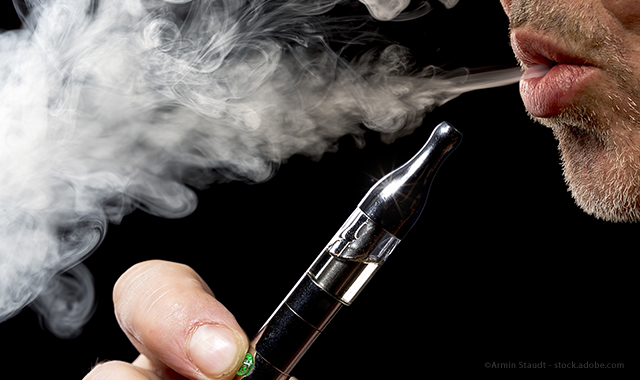Study finds sweet e-cigarettes can increase risk of dental cavities

A new research study has determined that vaping sweet e-cigarettes can increase the risk of dental cavities.
The study investigated changes in cariogenic potential when tooth surfaces were exposed to certain e-cigarette aerosols in a controlled environment. The combination of the viscosity of e-cigarette liquids and some classes of chemicals in sweet flavors contribute to the increase, according to the lead researcher Jeffrey Kim, DDS, Ph.D.
Scientists systematically evaluated e-cigarette aerosols and found that the aerosols have similar physio-chemical properties to high-sucrose, gelatinous candies and acidic drinks, and interact with hard tissues of the oral cavity in such a way that can adversely affect teeth. Among more than 400 available e-liquid brands, 84 percent offered fruit flavors and 80 percent offered candy and dessert flavors, according to tobaccofreekids.org.
Read more: E-cigarettes shown to be detrimental to oral health
“This study will give dentists further information to help educate patients that using e-cigarettes can have detrimental effects on their mouths,” says Thomas Hart, DDS, Ph.D., senior director of the ADA Foundation Volpe Research Center.

The study suggests the complex impact of e-cigarettes on human health goes beyond respiratory and cardiac systems and may have significant implications on oral health.
“[FDA has] data to show that use of e-cigarettes, while potentially posing much less harm than combusting tobacco, is not benign. It causes its own health effects … [Youth e-cigarette prevention] may be the most important thing I can accomplish in my role as the agency’s commissioner,” says FDA Commissioner Scott Gottlieb, MD, in a statement released by the U.S. Food and Drug Administration.
The study was supported by the ADA Foundation and published in PloS One, a peer-reviewed open access scientific journal published by the Public Library of Science since 2006.
Scientists from the following organizations participated in the study: ADA Foundation Volpe Research Center; Department of Chemical and Biological Engineering, University of Colorado Boulder; National Institute of Standards and Technology; Molecular Characterization and Analysis Complex, University of Maryland; Johns Hopkins University; and the Department of Chemistry and Biochemistry, University of Maryland.
Floss & Flip Flops Episode 22: National Dental Hygiene Month
October 1st 2023Join the Sanders Sisters and Dr Anna Kay Thompson as they learn about the burning questions the medical community is not asking about oral health. Learn about all of the ways they are celebrating the good work of dental hygienists in their quest for whole-body health.